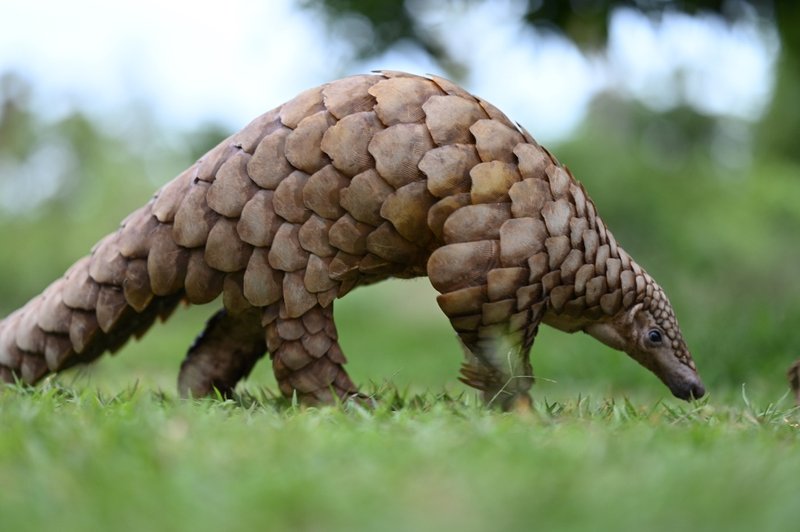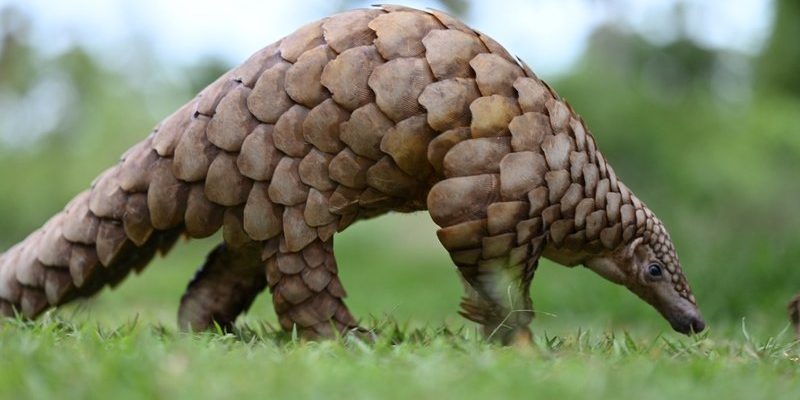
Pangolins, often called “scaly anteaters,” are not your average mammals. They’re nocturnal and have a diet primarily made up of ants and termites. This unusual diet makes them a bit different from many other animals. While they’re found across various habitats in India, such as forests and grasslands, they face a range of challenges. From predators to habitat loss, the question becomes: how do these small creatures cope? We’ll break down the various survival strategies that Indian pangolins use to navigate their harsh environments.
Unique Physical Adaptations
One of the first things you’ll notice about Indian pangolins is their tough, scaly exterior. These scales are made of keratin, the same material found in our hair and nails. This tough armor serves as a form of protection against predators. If a pangolin feels threatened, it can curl up into a tight ball, showcasing its hard scales like a living fortress. Imagine a tiny tank rolling into cover—that’s the pangolin’s defense mechanism!
But their adaptations don’t stop there. They have long, sticky tongues that can extend up to 16 inches! This fascinating feature helps them reach deep into ant mounds and termite hills. The pangolin’s flexible tongue is a perfect tool for snagging its prey, allowing it to enjoy a meal without much effort. Honestly, it’s like having a built-in vacuum cleaner for ants.
Another interesting aspect of their physical adaptations is their strong claws. Pangolins use these claws not just for digging into ant hills but also for climbing trees and navigating rocky areas. The combination of their scales, long tongue, and strong claws makes the pangolin well-equipped to handle many harsh environments.
Behavioral Strategies for Survival
Survival isn’t just about physical traits; behavior plays a significant role too. Indian pangolins are solitary creatures for the most part. This behavior helps reduce competition for food. By staying alone, they can forage for ants and termites at their own pace, which is crucial for their diet. They generally come out at night. This nocturnal lifestyle helps them avoid predators like big cats and birds of prey that hunt during the day.
Their foraging behavior is quite remarkable as well. While they can dig into anthills, they’re also known to follow the scent trails left by ants and termites. This skill is essential because it allows them to find food more efficiently. Just picture them sniffing around like an expert detective, following the scent to their next meal.
You might be wondering about their thirst. Well, pangolins get most of their water from the insects they consume, which means they don’t need to drink large amounts of water. This adaptation is especially vital in arid environments, where water is scarce.
Habitat Choices and Distribution
Indian pangolins are found in a variety of habitats across India, including forests, grasslands, and even agricultural areas. While they can adapt to different environments, they do prefer regions where their primary food source is plentiful. These habitats play a critical role in their survival. For instance, dense forests provide shelter from harsh weather and predators.
Interestingly, these pangolins have a knack for digging burrows. They dig deep into the earth to create sleeping chambers, providing them with a safe space to rest. These burrows also help them escape harsh weather conditions, like extreme heat or heavy rainfall.
In addition to natural habitats, they can also be found in areas altered by human activities, as long as there are enough insects. However, increased deforestation and urban development threaten their homes. The more their habitats shrink, the harder it becomes for them to find food and shelter.
Diet: The Role of Ants and Termites
Indian pangolins are almost entirely insectivorous, which means they feast mainly on ants and termites. This specialization in diet is crucial to their survival. Ants and termites are abundant in many environments, making them an ideal food source. Without this diet, it would be tough for pangolins to thrive, especially in areas where other food sources may be limited.
What’s fascinating is how their bodies have adapted to process these hard-shelled insects. Their stomachs are equipped with muscular walls that grind down the exoskeletons of insects. This adaptation is similar to how birds use gizzards.
Pangolins also play a significant role in their ecosystem. As they dig into ant mounds, they help aerate the soil, which benefits plant growth. So, while they’re busy snacking, they’re also helping maintain the health of their environment. You might say they have a dual role, serving as both predator and environmental caretaker.
Threats to Survival and Conservation Efforts
Despite their amazing adaptations, Indian pangolins face serious threats. Poaching is a significant issue. Their scales are highly valued in traditional medicine and are often sold illegally. This demand is a major driver of their decline. Unfortunately, many pangolins are captured and sold on the black market, leading to a rapid decrease in their population.
Habitat loss due to deforestation and urbanization also puts them at risk. As forests shrink and agricultural land expands, pangolins lose their homes and food sources. This shrinking habitat not only affects their ability to find food but also makes them more vulnerable to predators and human activities.
Thankfully, there are conservation efforts focused on protecting these unique creatures. Organizations are working to raise awareness about the plight of pangolins and advocate for stronger protections. Efforts include habitat restoration, anti-poaching initiatives, and legal protections to prevent illegal trade. Community involvement is also crucial; local people can help monitor pangolin populations and protect their habitats.
The Importance of Ecosystems
Now that we’ve explored how Indian pangolins survive, let’s talk about why they matter. They contribute significantly to their ecosystems, and losing them could disrupt the delicate balance of their environments. As they dig for food, they aerate the soil and promote plant growth, which supports other wildlife.
Moreover, by controlling ant and termite populations, they help maintain ecological balance. Too many insects can lead to significant damage to crops and plants, so pangolins play a key role in keeping those populations in check.
Recognizing their importance is essential if we want to ensure the survival of Indian pangolins and the ecosystems they inhabit. Supporting conservation efforts not only helps protect these creatures but also promotes biodiversity and a healthier planet.
In conclusion, Indian pangolins are truly remarkable survivors. With their unique adaptations and behaviors, they navigate harsh environments, all while playing a vital role in their ecosystems. Understanding their challenges and advocating for their protection is crucial. By doing so, we can ensure that these fascinating creatures continue to thrive in the wild.

